|
INTRODUCED
AND INCIDENTAL FINDS
|
|
Every so often an unusual or introduced object turns up on the beach at Sheppey. The most commonly found are internal casts of flint echinoids (sea urchins) which wash onto the beach from the river gravels present in some parts of the upper cliff section. Very rarely flint impliments are found which date back to Mesolithic times. Occasional teeth and bone fragments may also wash out of this level. During the Nineteenth century waste material from the Kentish coal mines was used as hardcore under roads. The consequence of coastal erosion is that alongside buildings, the roads that supply them are sometimes slumped and broken up on the beach. Amongst this material Carboniferous plant fossils can be found.The most unusual find that I know of to date is the finding of a Miocene shark tooth washing out of the clay slips at the Coastguard Lookout section. The specimen has been identified as Carcharocles chubitensis, and is most probably of US origin? (If anyone out there recognises the preservation and can give me a possible location I would be most grateful) |
|
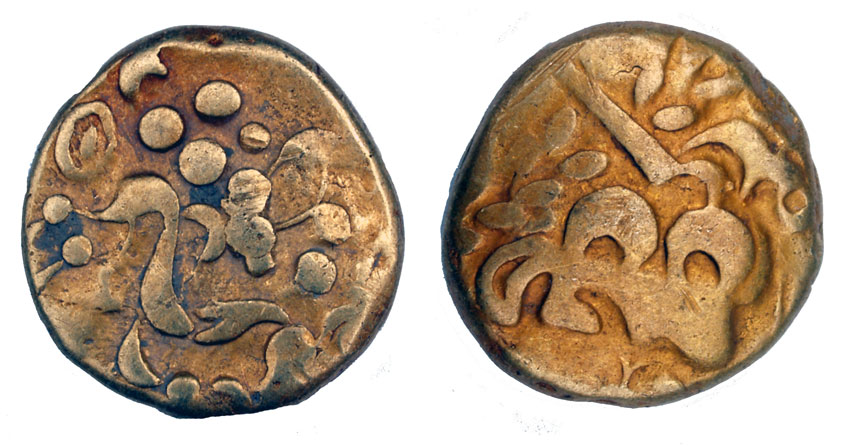 |
|
A stunning gold coin found on the beach between Eastchurch and Minster by visitors to the island Cornelis and Carina Put. The coin is an Iron gold stater. It's an imported Gallo-Beligic stater, Biface type with a wreathed head right on obverse, and sinuous horse on reverse. c.80-60 BC. (The weight is 6 grams) GPS - 51;25;20,9519999999902 0;5;34,3319999999997 |
|
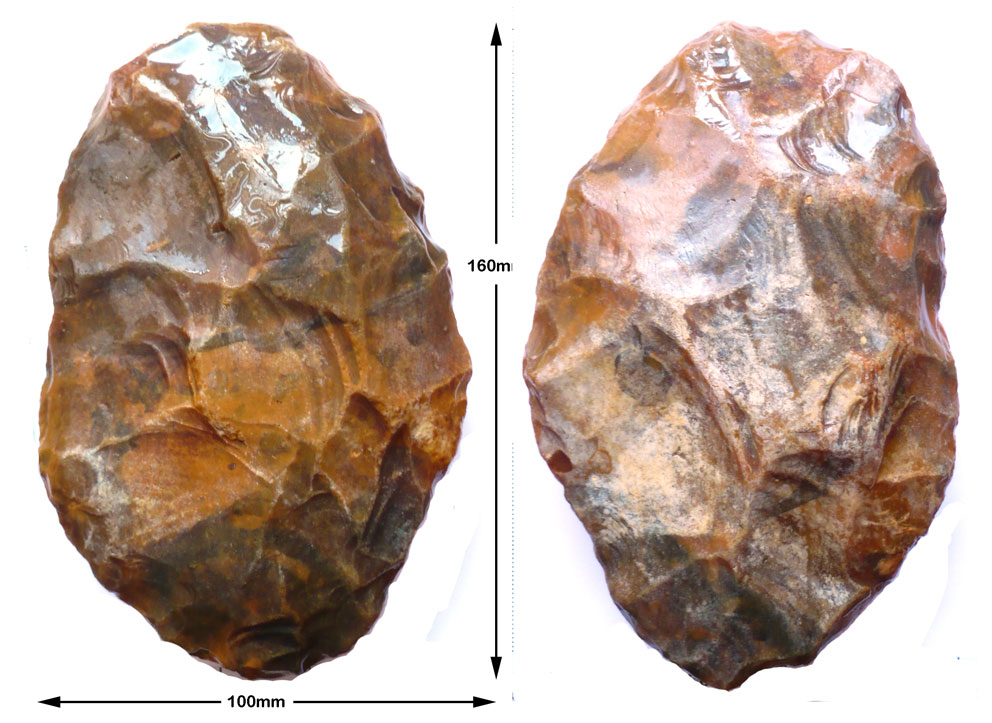 |
|
Above - Hand axe,
Paleolithic, between 250,000 to 800,000 years BC
found on the beach at Paddies Point by Danny Hogburn 1st July 2014 |
|
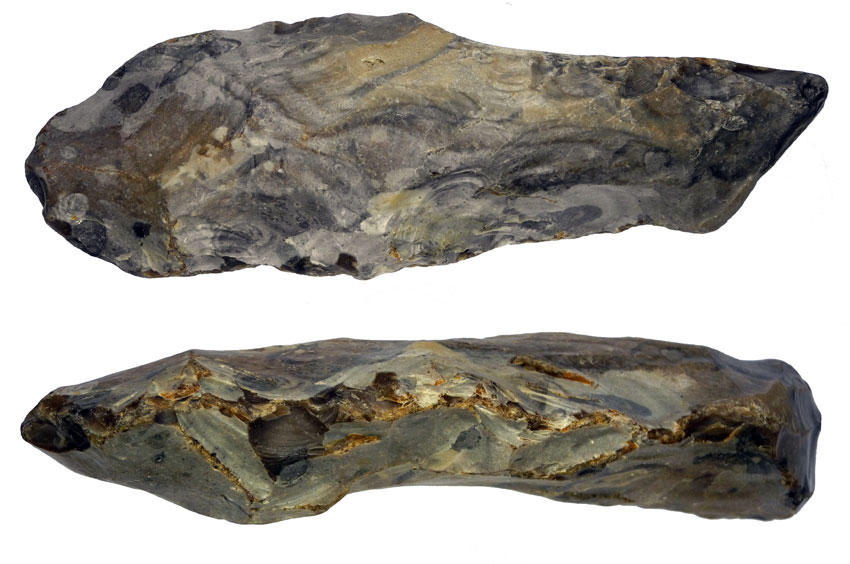 |
|
|
Above,
Mesolitic hand axe found on the beach at Paddies Point by Thomas Harrison
|
|
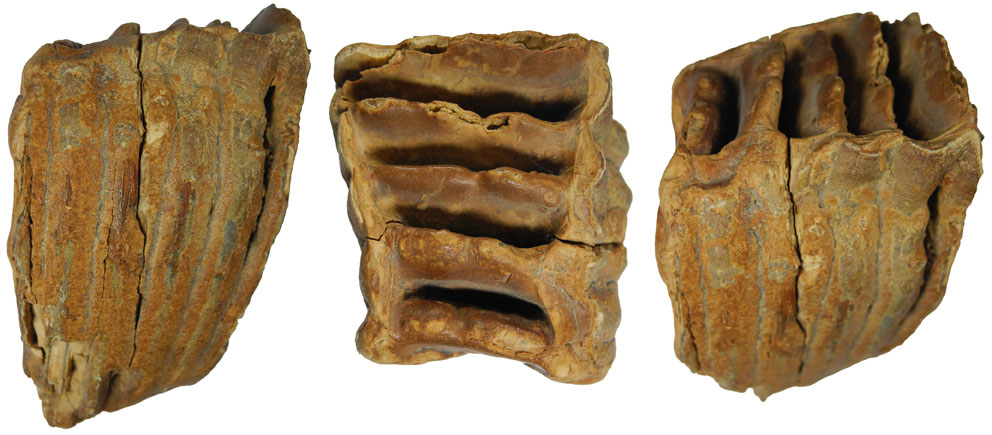 |
|
|
Above
is a partial tooth of the straight toothed elephant Palaeoloxodon
antiquies found in the gravel beach near Leysdown
|
|
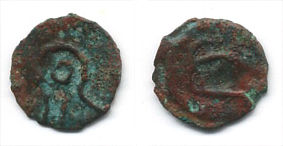 |
Celtic CANTII coin found on the beach at Shellness and dates to 100 years B.C. R.D.Van Arsdell illustrates one & describes the coin. These coins were the first ever to be used in Britain Found by Steve Parkes |
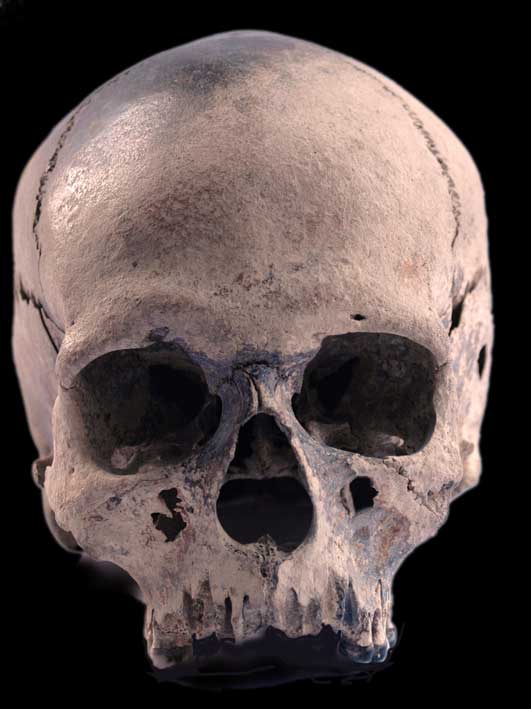 |
|
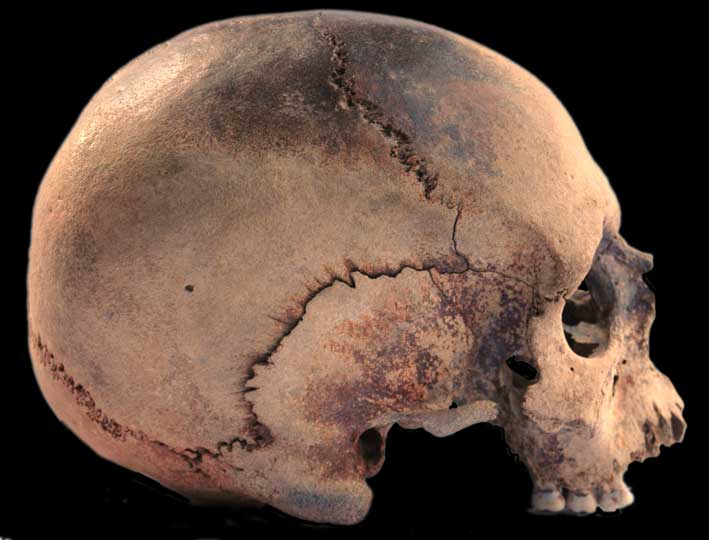 |
|
| The skull above was found by me on New Years Day 1997 as I walked along the very low tide mark here on Sheppey, trying to walk off the effects of the recent festivities. I came across what at first appeared to be a cannon ball embeded in the silt deposits. As I walked around the object to my suprise I saw the eye cavities. The skull was covered in seaweed and barnacles. I then placed it in a plastic shopping bag that I had brought along on the off chance of finding a fossil or two. I have since been assured that the skull is not modern but dates from the middle ages, so could be somewhere between 300 & 800 years old. The tooth wear pattern is the main indicator for this and is related to the way wheat for bread was ground so causing distinct flattening of the teeth. | |
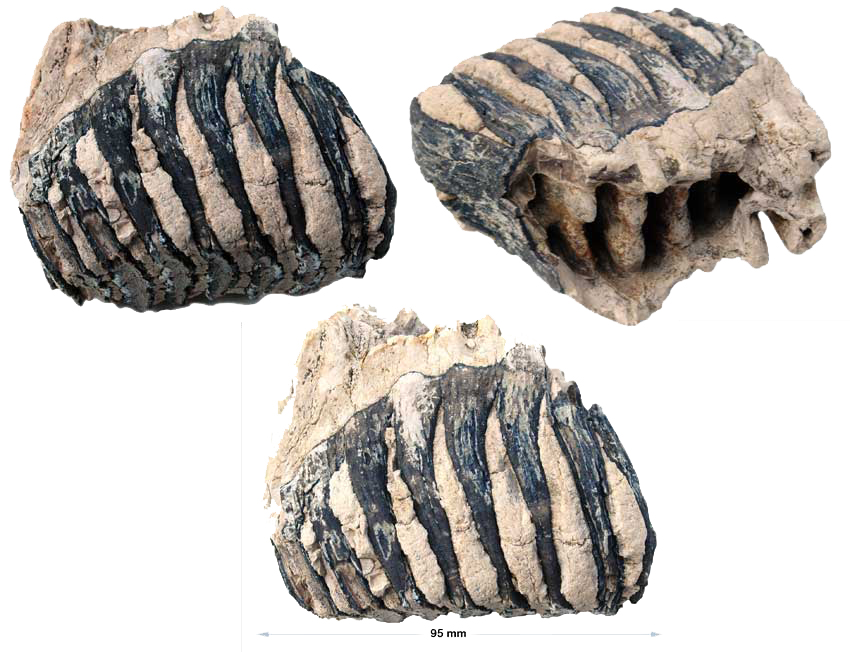 |
|
|
Baby Mammoth
tooth found by Danny Hogburn near to Hensbrook. This tooth is very poorly
preserved and is in danger of disintegrating. This is typical of the
preservation associated with degraded river gravels. Probably Devensian
in age this is the only example of a Mammoth tooth found in recent times.
There are recorded Pleistocene finds on Sheppey dating back to the 18th
Century but, apart from doubtful horse teeth finds this is probably
the first of its kind for more than a century.
|
|
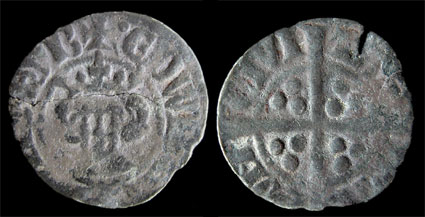 |
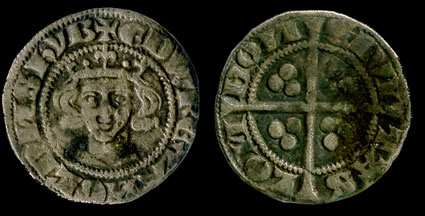 |
|
Edward
the first silver penny, found by Steve Tracy of the TRG on a field trip
25-4-04 at Hensbrook in the pyrite accumulations on the beach
|
Edward
the first silver penny, found by Paul Wright, a member of the Medway
Fossile & Mineral Society near to Warden Point while searching the
pyrite accumularions for small teeth etc.
|
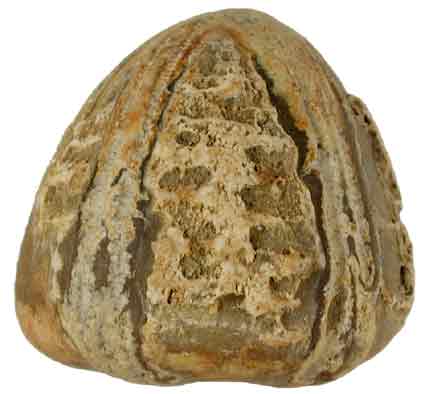 |
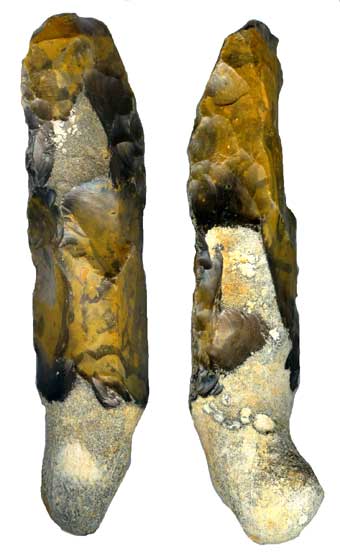 |
|
Typical
example of a Chalk echinoid as found on the beach at Sheppey
|
Mesolithic
hand tool, found by Austin Lockwood, on the beach at Hensbrook
|
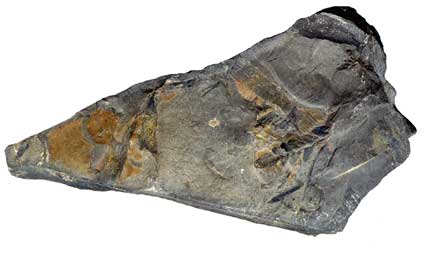 |
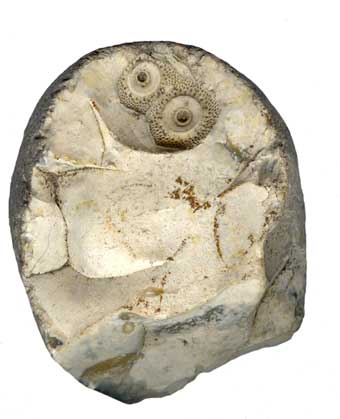 |
|
Carboniferous
plant fossil from the hardcore of nineteenth century road building
|
White flint, typical of the decomposing flints found in the London Clay with echinoderm plate impressions |
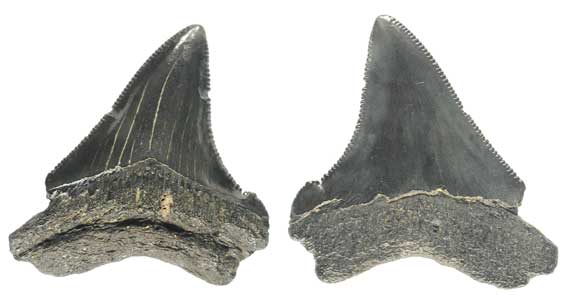 |
|
|
Carcharocles chubitensis tooth found by Pete Norwood washing out of a clay slip on the beach at the Coastguard Lookout, near to Warden Point An Email interpretation of how this tooth may have found its way to Sheppey from David Ward Yes a very interesting tooth. Its id is Carcharocles chubutensis, sometimes called sibauriculatus. It is a lineage index fossil for the mid-late Oligocene to mid Miocene. i.e. it is between 10 and 30 million years old. In Europe, we do not have clays of this age (the dark mineralisation suggests a clay rather than a limestone or sandstone. There is no possibility that it is local in origin. Although there is an outside chance that it is from the drift, and is ex-glacial from Belgium, there is a more intriguing possibility. Carchodon toliapicus - from Sheppey - a single tooth - lost in the war when Bristol Museum was bombed. It too was found, ostensibly, at Sheppey, but is almost certainly from the Boom Clay near Antwerp. I have, in Copenhagen Museum, seen Carcharocles, with original C19 labels as from Sheppey, but actually (if my memory is correct) from Belgium/Germany. So what is going on? My suggestion is that it represents one of the specimens imported to sell to gullible visitors. I am not sure where Mud Row was (Bowerbank, 1840), but it seems that it acted as a magnet for fossil collectors, who did not want to get their feet dirty. Signed David Ward |
|
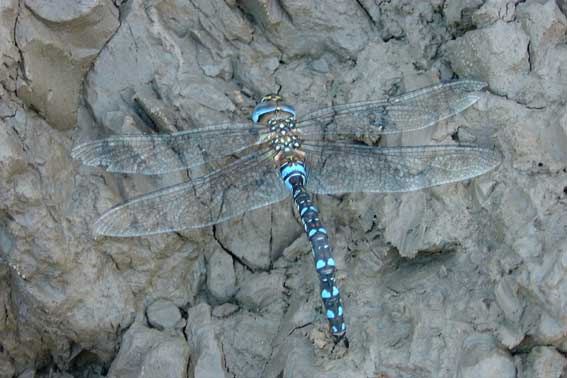 |
I couldnt help including this image, as the specimen is so beautiful. The Dragonfly Brachyron pratense as seen at rest on the clay at Sheppey |
